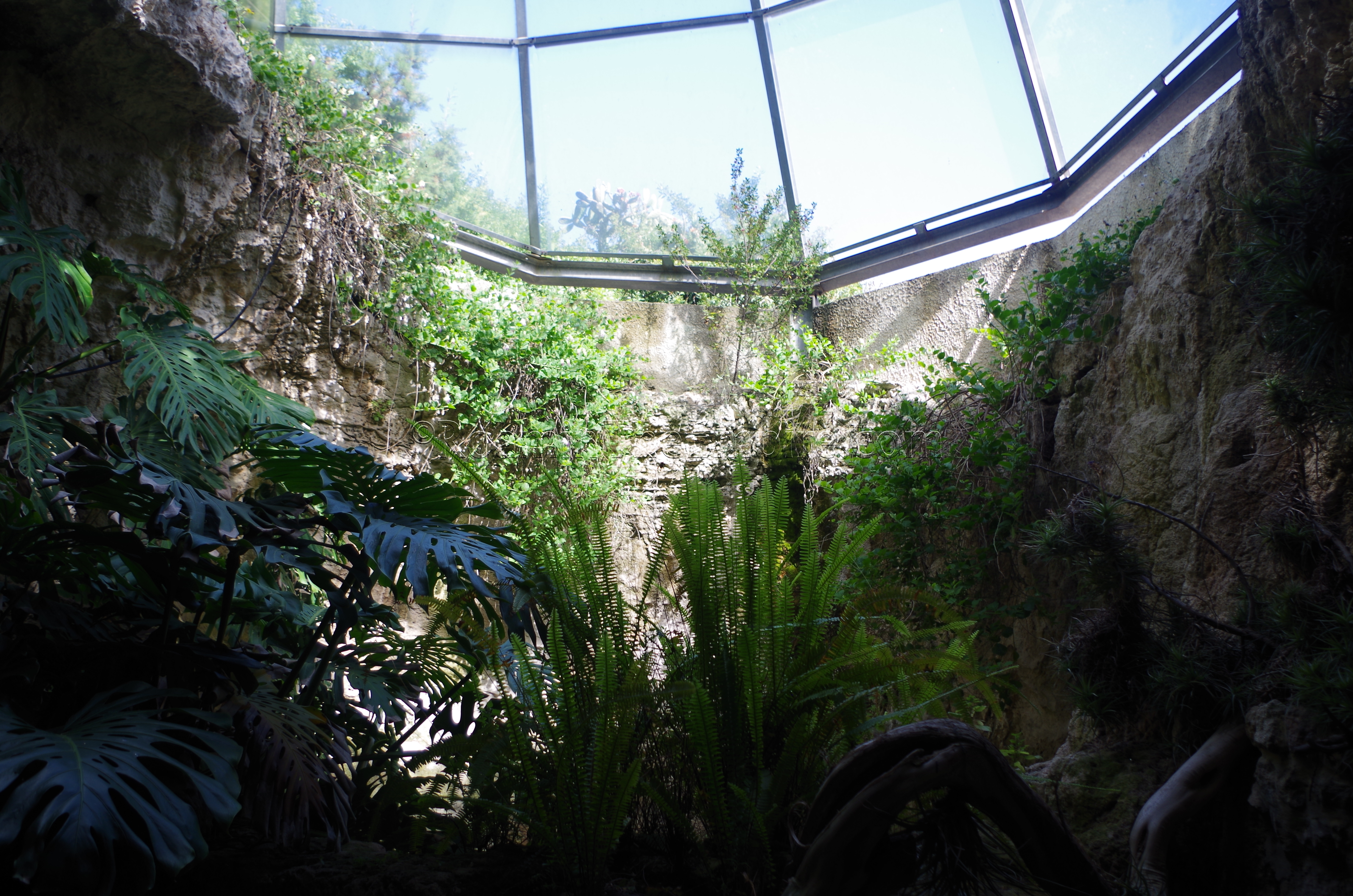
Continued from Caralis Part I.
Orto Botanico di Cagliari
Just down the street from the amphitheater is the Orto Botanico di Cagliari, the botanical gardens. The Orto Botanico, located at Via Sant’Ignazio da Laconi 11, are open every day except Monday from 9:00 to 18:00 in the summer (April through October) and 9:00 to 14:00 the rest of the year. Admission to the gardens is 4 Euros.
Within the botanical gardens, there are several structures associated with the Roman city. The first of these features is the so-called Vasca a Trifoglio in the western part of the park. Currently used as fountain and basin, it was originally constructed during the Punic era of the city, in the 4th century BCE, as a cistern. It continued to be used under the Romans through the 2nd century CE. A short walk to the east is another cistern. Referred to alternatively as the Grotta Gennari, a caldarium, and a tepidarium, it is in actuality another cistern dating to the Roman period of Caralis. This cistern can be entered as it is currently used to house some of the plants in the botanical garden’s collection. A few meters on along the path to the northeast is another cistern, currently used as a water feature, dating to the Roman period.
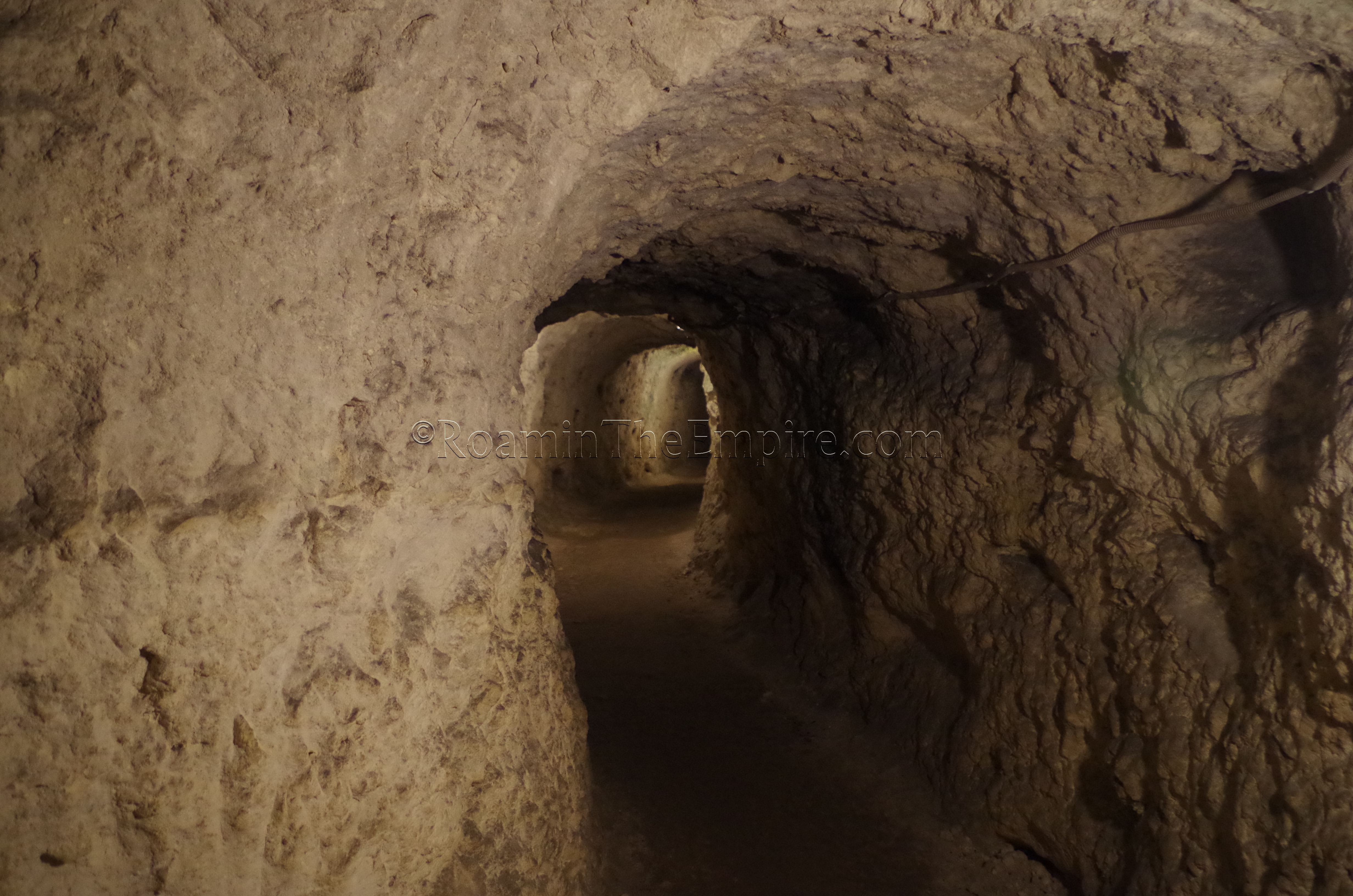
A bit further on to the northeast, in the shadow of a few huge ficus trees, are the remains of a Punic-Roman quarry. Like the first cistern, the period of use seems to be between the 4th century BCE and 2nd century CE, spanning both Punic and Roman periods of use. The tool marks are not obvious, making it look much like a natural cave at first glance, but there is visible evidence of quarrying at the location upon further inspection. A few more meters to the northeast is the entrance to some water channels and an underground cistern. From the entrance, the main channel can be walked for about 50 meters to the large cistern. The water system that these several cisterns are part of, seems to be connected to the amphitheater, which is just a few hundred meters to the northeast of this channel entrance.
The area of the botanical gardens seems to have been a garden or public area of some sort during the Roman period. Aside from the cisterns and water channels already described, there are a few other possibly ancient remains that may be connected to this use. In the northeast corner of the gardens there are some other constructions that appear to be water channels leading in the general direction of the amphitheater, though there does not seem to be any documentation stating this connection. There are, however, signs for the first three cisterns and the quarry in Italian.
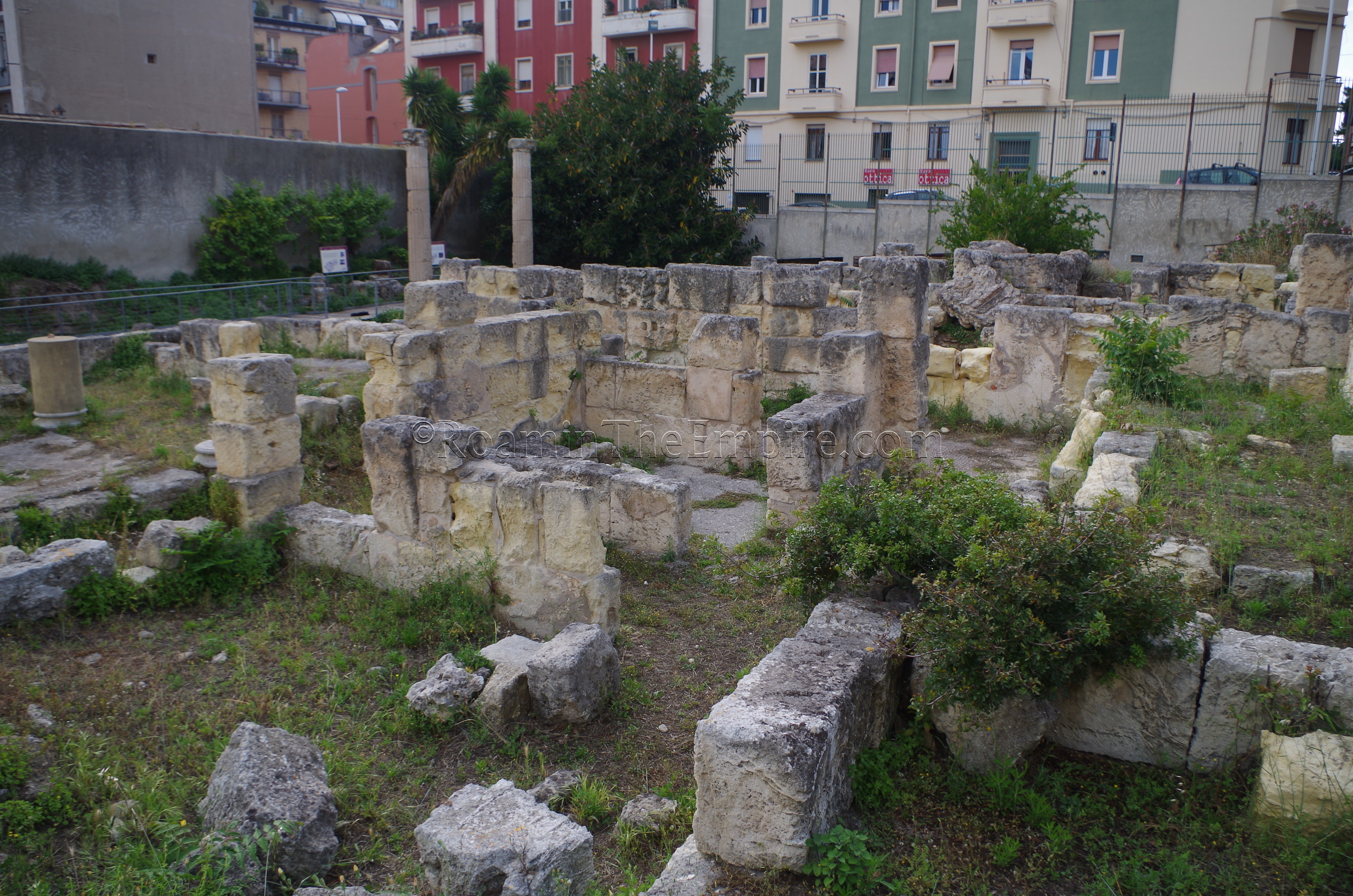
Villa di Tigellio
Down the street from the botanical gardens is the Villa di Tigellio archaeological site. Located at Via Giovanni Carbonazzi 7, the Villa di Tigellio is open in the summer between 10:00 and 14:00 and between 15:00 and 19:00. In the winter, the site is open continuously between 9:00 and 17:00. The site is open every day and admission is 2 Euros.
Despite the name, the Villa di Tigellio archaeological area does not consist of a single residential villa, but rather parts of two urban insulae containing sections of two residences and a bathing complex. The name originates in the supposition during the first excavations of the area, that the property may have belonged to the 1st century BCE Sardinian lyric poet and friend of Julius Caesar, Tigellius, who was said to have had a villa in the area of the amphitheater in Caralis. The structures here seem to have been first constructed during the reign of Augustus and remained occupied until at least the 4th century CE, but perhaps as late as the 6th century CE.
The raised walkway that accesses the archaeological area is built over the street that separated the two insulae. To the south is the insula that housed the bathing complex, of which not much is actually excavated. None of the discernable features of the baths are visible, but rather just a few scattered walls and some brick flooring. Immediately north of the walkway is the Casa degli Stucchi, the House of the Stucco. While there is no intact stucco visible, there are a few in-situ mosaics throughout the house and an ionic tetrastyle atrium at the south end, which is the most recognizable feature of the dwelling.
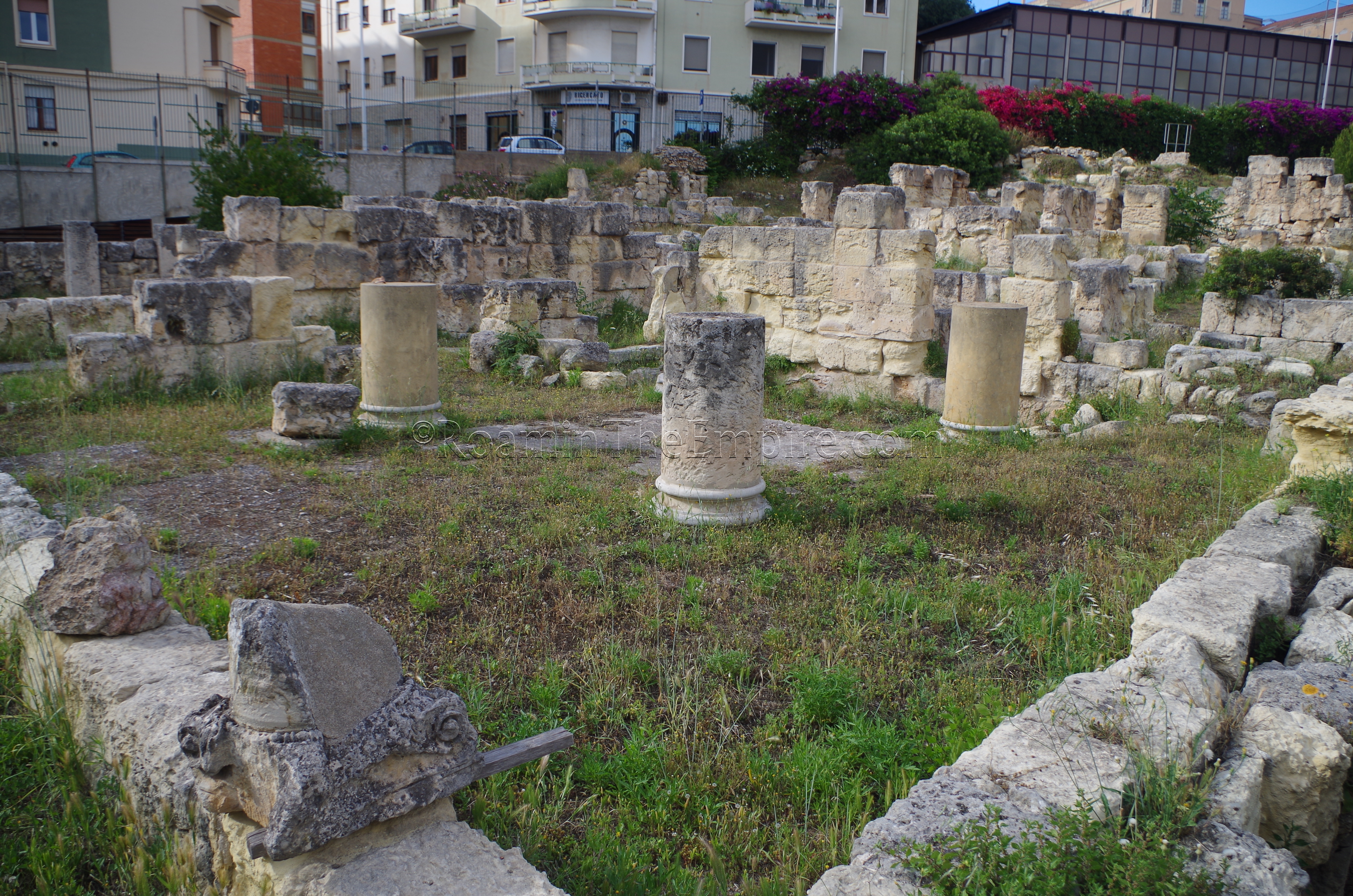
On the northwest side of the site is the Casa del Tablino Dipinto, the House of the Painted Tablinum. Like the other house, the feature for which it is named is no longer intact. Also like the other house, the most clearly recognizable feature of the house is the atrium, which in this case includes an intact impluvium and two large columns. The area of the tablinum is also preserved. A bit further into the house, past the tablinum, are the remains of cisterns. There is one informational sign out among the remains, but there is further information available in the ticketing area (in Italian), though a small translated flyer can be acquired there.
About a 10 minute walk from the Villa di Tigellio, is the Parco Orto dei Cappuccini, a public park set on the former grounds of the gardens of the Capuchin convent. Though there is no ticketed entrance to the park, it is subject to regular hours of opening; 7:00 to 21:00 every day. The rock face in the northeast corner of the park served as a stone quarry during construction of Caralis’ amphitheater, which is just over 100 linear meters away (though the current street layout necessitates a 650 meter walk between the two). Following the quarrying use, cisterns were also created out of some of the hollows created. Following that, some of the cisterns seem to have been used as prisons in late antiquity. While the rock face and some of the cavities in the rock can be seen, close access to any of it is restricted. Barriers prevent visitors from getting very close, and post-antique walls enclose and obstruct some of the hollows in the rock. There are no signs or any indications on-site of the Roman use of the area.
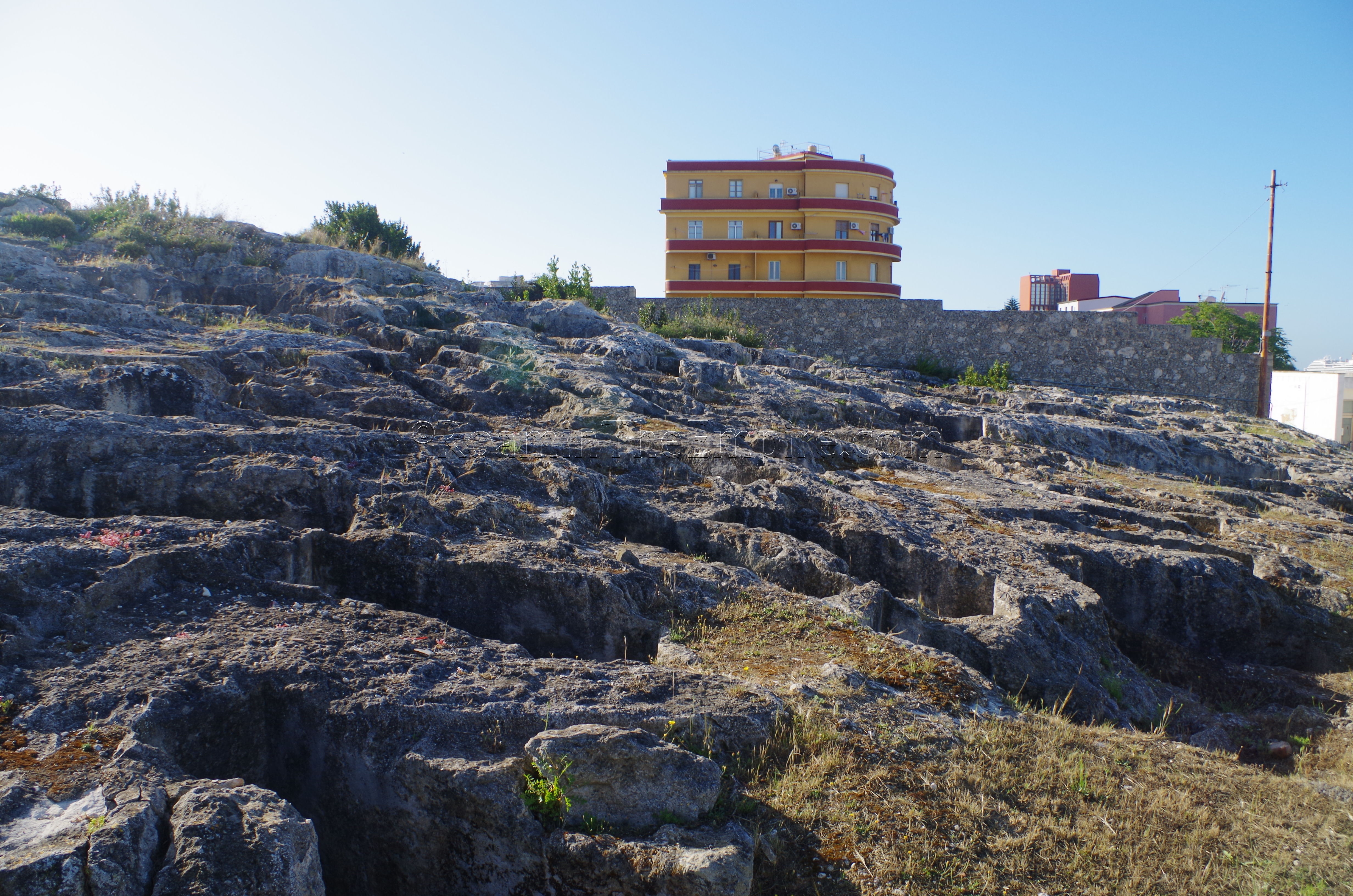
Necropoli di Tuvixeddu
A bit further out from the center of Cagliari, in the northwest part of the city is one of the necropoli of Karaly/Caralis; the Necropoli di Tuvixeddu. While the Parco Archeologico di Tuvixeddu is gated and treated much like any of the other archaeological attractions, there is no admission fee. The park has regular operating hours, though they vary greatly depending on the time of year. Rather than post the schedule, which has 10 separate periods with distinct opening and closing times, I’ll link to a page that has the schedule worked out. Opening hours vary between 5:30 and 7:00, while closing is between 21:00 and 24:00. The archaeological park is open daily.
The bulk of the park is made up of Punic era tombs dating to between the 6th century BCE and 3rd century BCE. There are a total of over 1200 Punic tombs through the park, and they consist of well entrances dug into the limestone, which open up into hypogeum burial chambers. Most of these are dug horizontally down into the rock, though there are some tombs that are dug laterally into some of the rock faces in the area. The densely packed nature of these tombs gives the necropolis its name; ‘tuvixeddu’ is the Sardinian word for ‘hill of holes.’ Unfortunately, none of the tombs are accessible and can only be viewed from the outside. Access routes prevent visitors from getting very close to most of the tombs, though there are a few in which one can look down into and see the actual entrance to the chamber.
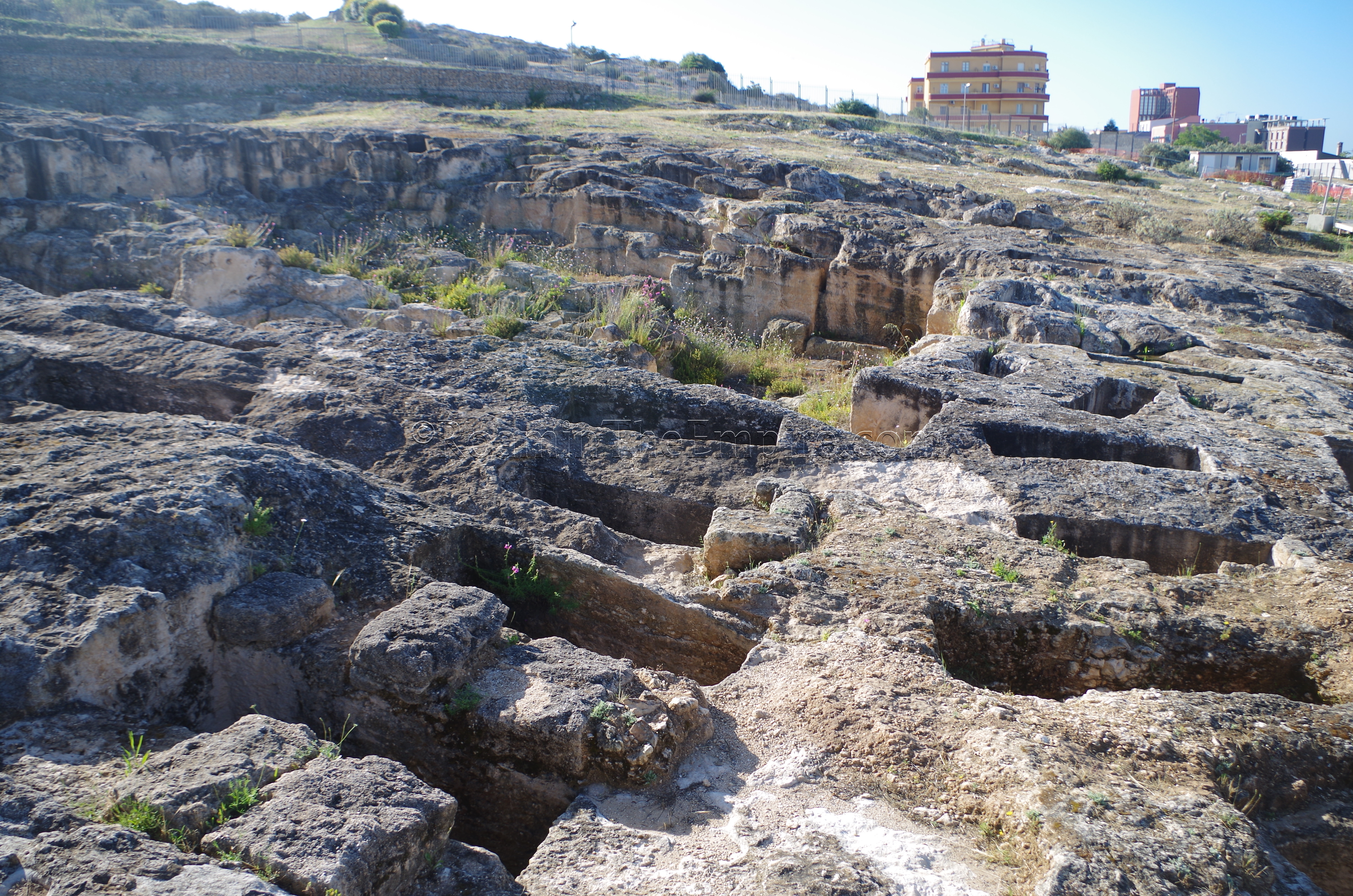
The hill continued to be used during the Roman occupation of Caralis, with burials occurring in the immediate area from the 1st century CE through the 3rd century CE. These tombs mostly clustered on the western slope of the hill, at the foot of which a Roman road out of Caralis ran along the route of the present-day Viale Sant’Avendrace. These tombs are largely inaccessible and not even very visible from the park. Toward the center of the accessible area of the park is a small quarry cut during the Roman period, among the Punic tombs. Though the quarry was only used for a short time, it damaged some of the tombs, which perhaps was the reason for its limited use. In the 2nd century CE, an aqueduct channel was cut through the necropolis, running from the Villamassargia spring to Caralis. This too, resulted in the destruction of some Punic tombs, and is visible at a couple points in the northwest extent of the park. The aqueduct also apparently ran through the quarry, which existed prior to the construction of the aqueduct.
There are quite a few informational signs in both English and Italian on site; including a large one at the entrance with a map and general description of the site. Smaller informational signs are scattered throughout the site. These, though, are metal signs with the descriptions etched into the metal and some are not faring so well exposed to the elements and can be difficult to read. The necropolis, one of the most extensive Punic burial sites known in the Mediterranean, is definitely worth the visit, even though it is a little bit of a walk out of the center of Cagliari.
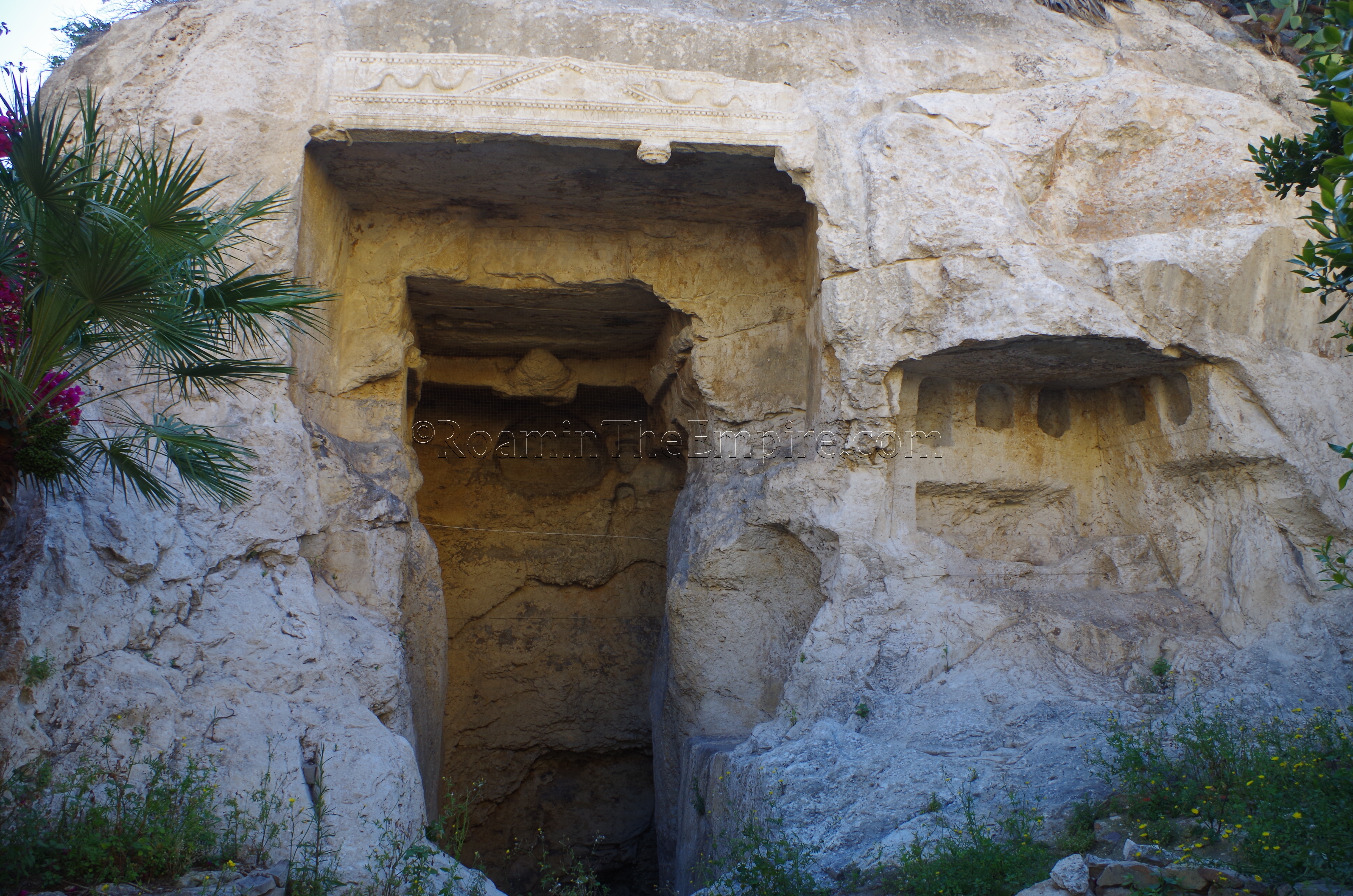
There is one of the Roman tombs associated with the Tuvixeddu Necropolis that is theoretically accessible, or at the very least, visible; the Grotta della Vipera. The tomb, located at Viale Sant’Avendrace 87, is theoretically open daily from 9:00 to 17:00 in the winter and from 10:00 to 14:00 and 15:00 to 19:00 in the summer. I attempted to visit during these times, but it was never open. It didn’t look like anyone had been in the tomb’s enclosure in a while either. Admission, however, is listed as 1 Euro, if one manages to find it open. When it is open, access is not allowed into the tomb, but rather just into the courtyard in front of it. Even if one can’t get access, the tomb is visible through the gate from the street.
The Grotta della Vipera is a Roman tomb built by one Lucius Cassius Philippus for his wife Atilia Pomptilla, possibly the daughter-in-law of Gaius Cassius Longinus, the consul of 30 CE who was exiled to Sardinia by Nero. The tomb was probably built in the 1st century CE and it earns its name from the image of two snakes on the lintel above the entrance to the hypogeum. Inside the tomb, poems in Greek and Latin (now, apparently mostly illegible) tell the story of the two lovers who were exiled to Sardinia; lending credibility to the supposition that they were related to the exiled Longinus. Lucius apparently took ill with a serious malady and Atilia petitioned the gods to take her instead of her husband, and upon her subsequent passing, he built this tomb for her at a prominent location on the road north out of Caralis.
Most of the remains of Caralis can probably be seen in a very packed day, though I took about a day and a half to see them
Sources:
Julius Caesar. African War, 98.
Cassius Dio. Historia Romana, 48.30-31.
Dyson, Stephen L. and Robert J. Rowland Jr. Archaeology and History in Sardinia from the Stone Age to the Middle Ages: Shepherds, Sailors, & Conquerors. Philadelphia: University of Pennsylvania Museum of Archaeology and Anthropology, 2007.
Grant, Michael. A Guide to the Ancient World: A Dictioniary of Classical Place Names. New York: Barnes & Noble Books, 1997.
Hoyos, Dexter. The Carthaginians. New York: Routledge, 2010.
Livy. Ab Urbe Condita, 23.40-41.
Miles, Richard. Carthage Must Be Destroyed. New York: Viking, 2011.
Pliny the Elder. Naturalis Historia, 3.13.
Pomponius Mela. De Chorographia, 2.123.
Stillwell, Richard, William L. MacDonald, and Marian Holland. McAllister. The Princeton Encyclopedia of Classical Sites. Princeton, NJ: Princeton U Press, 1976.
Strabo, Geographica, V.2.7.


